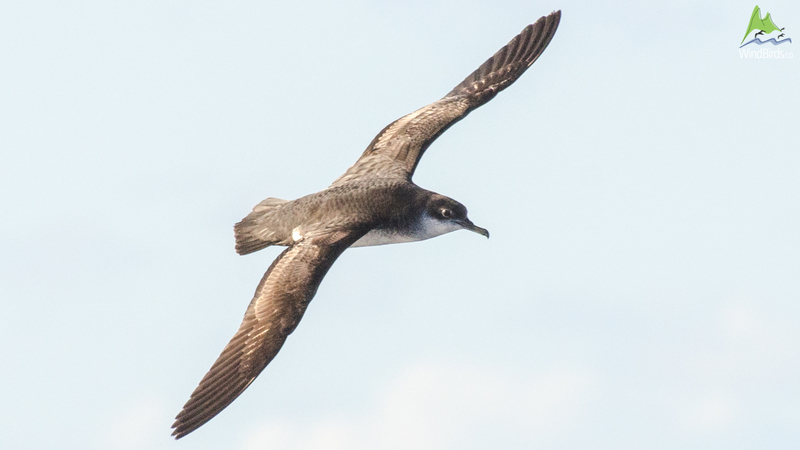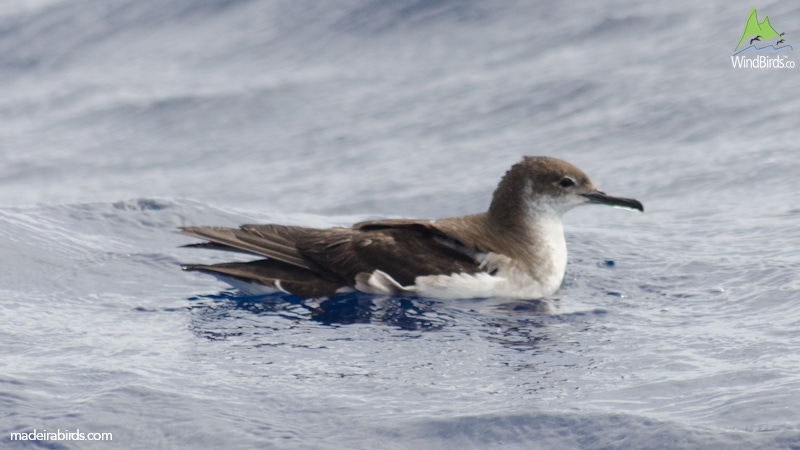Manx shearwater Puffinus puffinus puffinus (Brünnich, 1764)
Order: Procellariiformes Family: Procellariidae Status: Breeding in Madeira

Recommended birdwatching sea trips to watch this seabird
Bird, dolphin and whale watching trip
Zino’s Petrel Pelagic Expedition (sometimes, in April and May, Manx are also heard)

Manx shearwater Field ID Keys
Shape & Size
Manx Shearwater is a medium-small sized marine bird with thin bill, long and narrow wings and a relatively short tail.
Colour Pattern
A black and white shearwater. The underside is white while the upper parts are completely black. Its bill is thin, long and black. In flight, it is possible to see the dark undersides of the wing tips.

Behavior
Manx Shearwater flies quickly with some glides and a few changes in direction. It has a very rapid and strong wing beat. It beats its wings much more than a Cory's shearwater which mostly glide.
In the nesting season, these birds gather at sea by the evening before heading for their nesting colony inland.
This bird moves with great difficulty on land as it has very weak feet.
Habitat
Manx shearwater is a pelagic bird though it is common to see it from the coast. In Madeira archipelago, the breeding birds are present between mid-January and July (their nesting season); though by the end of August and in September it is possible to observe Manx shearwaters passing by Madeira coast during their migration southwards. They all spend the winter offshore, on the Southern Atlantic.
Distinction from similar species
Manx can be distinguished from Barolo’s Shearwaters Puffinus baroli by its mostly black face, specially around the eyes and its larger size.

Puffinus puffinus Biometrics
Wingspan: 75 - 84 cm (Howell, 2012)
Total length: 31 - 35 cm (Howell, 2012)
Weight: 350 - 450 g (Hume, 2002)
Other Bird Facts
Seasonality in Madeira: The breeding birds are present in Madeira from the end of January until July while by the end of August and in September it is possible to observe this species passing by in their migration route.
Breeding: The bird excavates a deep nest in the rock, about 1 meter deep, and lays a single egg in a single annual laying. Incubation lasts about 50 days and the chick is fed by both parents for approximately 6 weeks before leaving the nest in July.
Diet: Feeds on fish and small squid and it often dives to catch it.
Status
Madeira local status by Correia-Fagundes et al, 2021: Common breeding bird
Madeira local status by Romano et al, 2010: Common breeding bird
Madeira local status by Zino et al, 1995: Very common breeding bird
Conservation status by the IUCN Red List Categories, 2013: Least Concern ver 3.1
Name of this species in other languages
Madeiran: Patagarro
Portuguese: Pardela-sombria, Bobo-pequeno
German: Schwarzschnabel-Sturmtaucher
Dutch: Noordse Pijlstormvogel
Swedish: Mindre lira
Danish: Almindelig skråpe
Finish: Pikkuliitäjä
Norwegian: Havlire
Spanish: Pardela Pichoneta
Catalan: Baldriga pufí
French: Puffin des Anglais
Italian: Berta minore
Polish: Burzyk pólnocny
Slovak: Víchrovník malý
Czech: Buřňák severní
Join Madeira Wildlife Monthly Newsletter. All the updates on your email every month.